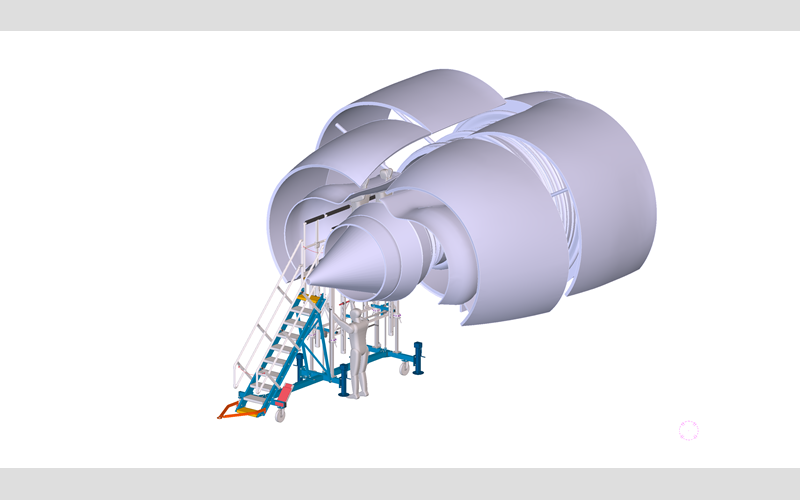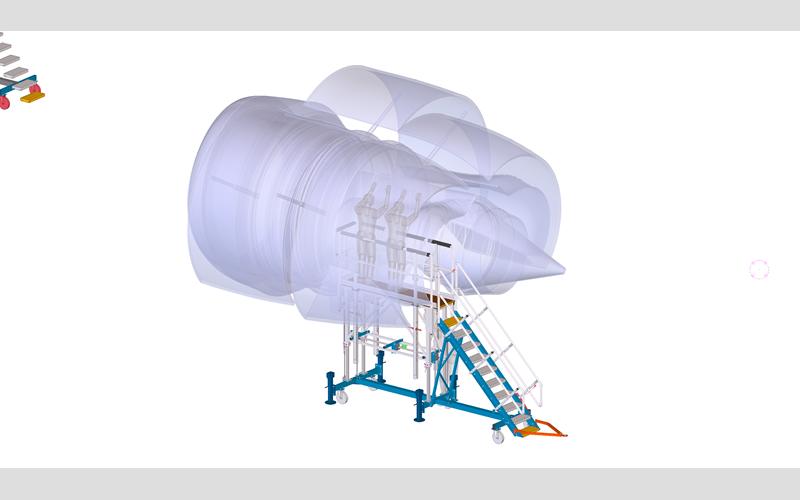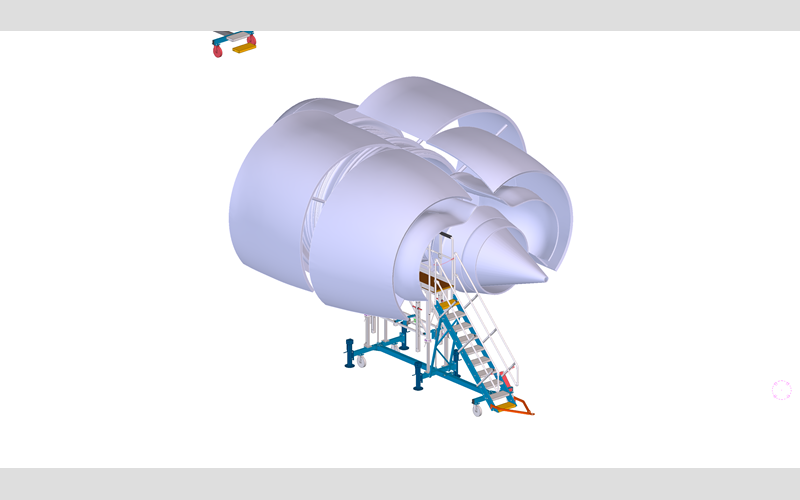AFT Engine Maintenance
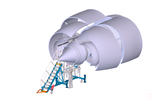
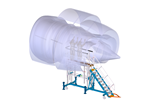
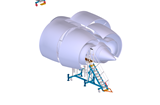
Introduction
Engine maintenance tasks become rather challenging when it comes to minimizing the cost of mistakes and maximizing continuing aircraft and worker safety. Investments in the right equipment is essential to cope with human factors that affect these challenges.
NIJL Aircraft Docking provides a wide range of engine access solutions for both narrow-body and wide body aircraft. We have teamed up with various MRO organizations for the latest developments focused on the engine-on-wing maintenance access. Forthcoming engine maintenance stands cover the engine pylon, fan cowl and thrust reverser as parts of the engine cowling especially when opened up for maintenance.
This article reflects on the engine access solution for the thrust reverser area AFT of the fan cowl and forward of the turbine exhaust system. Besides the fact that thrust reversers deflect the thrust to decelerate the aircraft during landing or rejected take-off, the thrust reversers can be opened to perform maintenance on the Core engine and Low Pressure Turbine modules.
AFT Engine Maintenance Access
From an engine maintenance perspective many engine system hardware components, line replaceable units and aircraft/engine interfaces hardwired directly to the aircraft are accessible when the thrust reversers are opened up.
For instance the engine mounting system is located inside the nacelle between the aircraft pylon and top of the engine. It comprises the forward mount, aft mount and thrust links to the turbine rear frame, which are holding the gyroscopic, vertical and thrust loads. These engine mounts are subject to maintenance checks.
For modern commercial jet engines the Full Authority Digital Engine Control (FADEC) is the heart of the engine system. It provides control, maintenance tests and fault monitoring of the engine valves, solenoids, actuators, power supplies, data busses, sensors and probes and optional expanded engine condition monitoring. FADEC is located on the fan case module and uses information from the aircraft computers, switches and controls. Additional inputs are provided by the engine sensors and probes from the engine fuel system, air system, oil system, start system, ignition system and thrust reverser actuation system. Among others many of these hardware components and line replaceable units are located on Core engine and Low Pressure Turbine modules, hence maintenance tasks in the thrust reverser area.
Periodic inspections of internal engine parts are performed through boroscope ports. The purpose of boroscope inspections are looking for defects inside the engine at regular time intervals, abnormal time intervals or engine events. The engine boroscope ports and plugs are located along the area behind the thrust reversers above the engine centerline.
AFT Engine Access Stand Features
The first set of AFT Engine Access Stands will be used for on-wing maintenance of the Airbus A350 Rolls Royce Trent XWB engine thrust reverser area.
Our AFT engine access stand features height adjustment in order to optimize working height for safe AFT engine maintenance access and to reduce maintenance worker fatigue during time-consuming tasks. Minimum work platform height is based on the condition when engine components are no longer within hand's reach for standing maintenance workers on ground level.
The AFT engine stand platform length covers the full distance of both Core engine and Low Pressure Turbine modules. Therefore providing sufficient working space for two maintenance workers and their toolboxes. The AFT engine stand is equipped with height-adjustable railing on the platform sides. Our Flexible Railing System provides worker safety in narrow working space at height without obstructing engine components.


